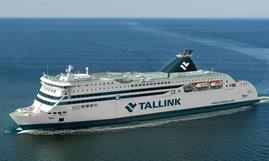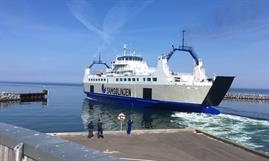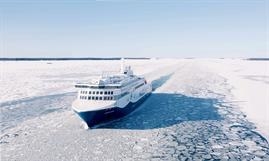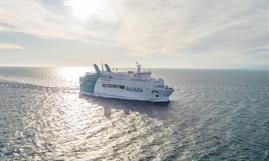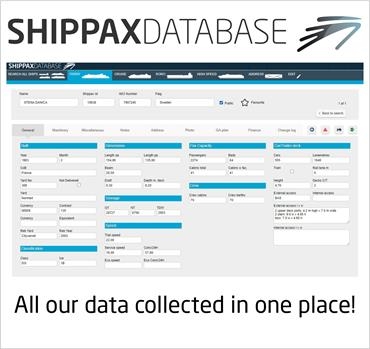
KONG FREDERIK IX at Rødby © J-B Jensen
The Beeline turns 60 with 315 million passengers transported to date
FerryThe Beeline, the route between Puttgarden in Germany and Rødby in Denmark, was inaugurated in 1963 – 18 years after the end of World War 2. At that time, zero direct emissions or sustainability were not on the agenda. Rather, the aftermath of the war was still clearly visible, and the speeches given at the opening clearly reflected this.
Both the German President Heinrich Lübke and the Danish King Frederik IX emphasised that the ferry connection between the two countries would contribute to the mutual cultural and political understanding of the two peoples, their culture and politics, as well as to trade. They also expressed the wish that the ferry route would promote European cooperation.
When the route was opened, it belonged to German rail (Deutsche Bundesbahn) on the German side and DSB (Danske Statsbaner) on the Danish side. Despite the different ownership, the two companies jointly invested in four new ferries for the route in 1997 - the so-called double-ended ferries, which are operating the route today. The ferries were future-proof as they were built as diesel-electric ferries. Thus, it was possible to replace the diesel generators with new technologies when available.
Today, a visit to the engine room, the bridge and the galley or a tour below the waterline clearly shows the extent to which the Beeline ferries keep up to date. As early as 1998, the Scandlines employees carried out fuel-saving exercises in the simulator located in Puttgarden. At the turn of the millennium, exhaust gas boilers were installed and the ship hulls were optimised to reduce fuel consumption during the crossing. Then, in 2013, with new technology available the diesel engines could be supplemented by batteries. With the conversion of the first of a total of four ferries to a hybrid ferry, an important step was taken towards emission-free ferry operation.
Today, the battery packs for the hybrid system fill up the engine room of all four Scandlines passenger ferries on the route. Automation screens both there and on the bridge monitor power generation and consumption. Food waste is being tackled in the galley, for example by serving course in portions instead of a buffet. Below the waterline, the ferries are painted with silicone paint that makes them glide more easily through the water. Each ferry also features four new, low-noise thrusters. In addition to lowering the noise level that can stress the harbour porpoises in the Fehmarn Belt, the thrusters are designed so that the ferries use less fuel during the crossing.
Since opening in 1963, the Beeline has transported 315 million passengers across the Fehmarn Belt. With so many passengers, the terminals must also keep pace with developments. Electronic solutions ensure that check-in is lightning fast, and for both freight units and cars, automatic check-in via number plate recognition will soon be available.
This is just some of the strong evidence that the 60-year-old ferry route is keeping up with the times – and often even a little ahead of the curve. Further proof will be provided in 2024, when a brand new electric ferry will be operational on the route.

Illustration of the new vessel which will be delivered in 2024 © Scandlines
May 14 2023


